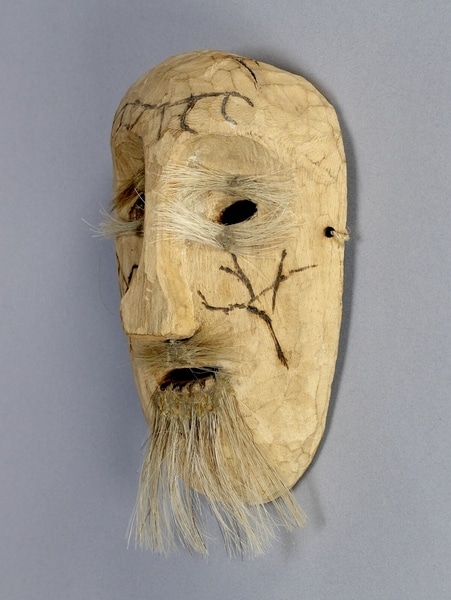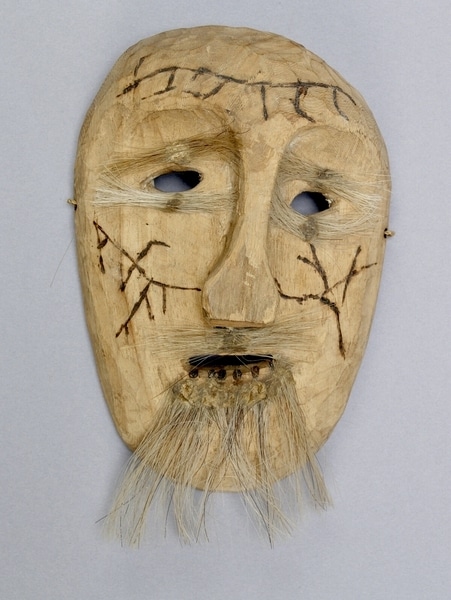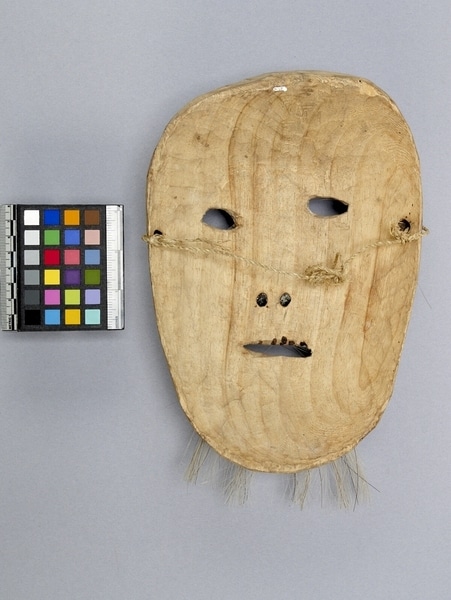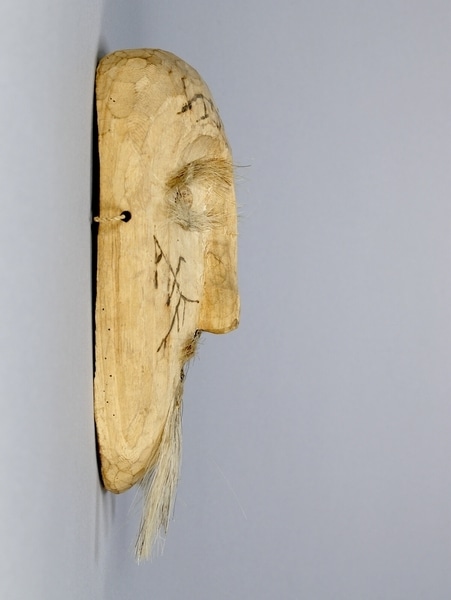Mask Item Number: Ni65 from the MOA: University of British Columbia




Description
Mask with roughly ovoid light coloured wood, tapers slightly to chin. Facial features asymmetrical, with a long thin nose, bulbous end, and flattened top. Almond shaped holes for eyes, horizontal slit for mouth, perforated nostrils are black from burning. Hair is gathered into bundles and affixed horizontally, using adhesive wads to the following areas: above and below each eye, below nose, and fanned vertically over chin. Dark brown burned lines form geometric pattern on each cheek and along eyebrow area. Burned hole at each temple has length of single twist fibre cord strung between and knotted on back.
History Of Use
Masks were recently introduced by Christian missionaries; they are made for both ritual and tourist art; masks with horse hair are generally for ritual use (Knox).
Cultural Context
contemporary; tourist art; ritual
Narrative
The Wixáritari are known to the larger world as the Huichol, however that is not the name they use to refer to themselves.
Item History
- Made in Jalisco, Mexico and Nayarit, Mexico before 1980
- Collected during 1980
- Owned by Cicuri Shop
- Owned by Ralph Maud before February 1, 1982
- Received from Ralph Maud (Seller) and Museum of Anthropology Shop Volunteers (Funding source) on February 1, 1982
What
Who
- Culture
- Huichol
- Previous Owner
- Cicuri Shop and Ralph Maud
- Received from
- Ralph Maud (Seller) and Museum of Anthropology Shop Volunteers (Funding source)
Where
- Holding Institution
- MOA: University of British Columbia
- Made in
- Jalisco, Mexico and Nayarit, Mexico
When
- Creation Date
- before 1980
- Collection Date
- during 1980
- Ownership Date
- before February 1, 1982
- Acquisition Date
- on February 1, 1982
Other
- Condition
- good
- Current Location
- Case 93
- Accession Number
- 0774/0023